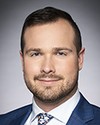Yes. With 2.9%, there is a limit to what we can do. What could we do with more money?
I would start with students. That's why we're here. We could provide more experiential learning opportunities for students. We look at as little as $15,000. That would hire a student for the summer. These are real examples of experience that make a difference and create a student's skill set.
They're graduating with a credential, but when they are involved in applied research, they get that hands-on learning, they network with industry and they get the critical skills. When you're called for a reference and they're asking about a student, they're not necessarily asking what grade they got in organic chemistry, but if they were able to work as part of a team and how their communications skills are. It's these skills and intangibles that are reinforced through applied research, so I would say, first of all, that it's students.
Second, I would say that it's our ability to serve. What we could do with more money.... We live in a rural environment. That's our space, and there are a lot of under-represented groups and small businesses that have challenges as they move toward or are interested in innovating and developing new products.
Currently, 50% of our collaborators are from under-represented groups. Of our collaborators, 27% are women-led, 25% are visible minorities and 2.5% are indigenous partners. We work on a lot of small projects that are valued between $5,000 and $15,000 per project.
This makes a difference for these small industries and these small companies. Those are just examples from within our centre for natural products, but now we're working toward having more of an impact with our community partners in social innovation.
It's exciting to see the potential. We could do a lot with more funding.




